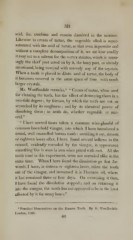Page 525 - My FlipBook
P. 525
521
acid, &c. combine and remain dissolved
in the mixture.
Likewise in cream of tartar, the vegetable
alkali is super-
saturated with the acid of tartar, so that even in powder and
without a complete decomposition of it, we see how readily
it may act as a solvent for the cortex striatus, which is seem-
ingly the chief part acted on by it, the bony part, as already
mentioned, being covered with scarcely any of the crystals.
When a tooth is placed in dilute acid of tartar, the body of
with much
it becomes covered in the same space of time
larger crystals.
Mr. Wooffendale remarks,* " Cream of tartar, when used
for cleaning the teeth, has the effect of destroying them in a
two-fold degree ; by friction, by which the teeth are cut or
scratched by its roughness ; and by its chemical power of
dissolving them : as acids do, whether vegetable or min-
eral."
" I have several times taken a common wine-glassful of
common household vinegar, into which I have introduced a
sound, well enamelled human tooth : on taking it out, sixteen
or eighteen hours after, I have found several hollows in the
enamel, evidently corroded by the vinegar, in appearance
something like is seen in iron when pitted with rust. All the
teeth used in this experiment, were not corroded alike in the
same time. When I have found the dissolution go fast for-
wards, I have, in sixteen or eighteen hours, taken the tooth
out of the vinegar, and immersed it in Florence oil, where
it has remained three or four days. On examining it then,
I have found the dissolution stopped ; and on returning it
into the vinegar, the tooth has not appeared to be in the least
affected by it for many hours."
* Practical Observations on the Human Teeth. By K. Wooffendale.
London, 1783.
6G


